#Literature Genres
Explore tagged Tumblr posts
Text
Literature theme
[literature theme]


types of literature, a general theme with nothing too specific picked out
mystery theme(link)

(Nick)Names:
auto, autobio, autobiogra, autobiographi/autobiography, aca, acade, academ, academe, academi, academia book, bookette, booketta, bookelle, bookella, bookine, bookina come, como, comedi/comedy
drama, dys, dysto, dystope, dystopi, dystopia, dystopian esse, essey/essay/essae, essie fictia, fiction, fanta, fantasy, fable, folk, folklo, folklor/folklore, folktai, folktale, fae/fay/fai/fey, fairy/faerie/fayrie, fairytale/faerietale
gen, genre, genra/genera histo, histori/history, historia, historica, historical, histfi, historfi, histofi, histoficti, horr, horro, horror litera, literatura, literature, literaturette, literaturetta, literaturelle,
literaturella, literaturine, literaturina, literar, literari/literary, lege, legend, legenda, lyr, lyre, lyri, lyric, lore myth, mytha, mytho, mythos, mythic, mythica, mythoca, mythaca, mytholo, mythology/mythologi, mag, mage, magi, magic, magica,
magical, mem, memo, memoi, memoir novel, novela/novella, nonfi, nonficti, nonfictia prose rome, roma, roman, romanti, romantic, romantica, romana, romanta,
romantica, romance, romancia, rev, revi/revie, review, rea, real, reali, realis, realism, realisme, realisma scifi, sciefi, sciefic, scienfi, scienfic, scienficti tale

1stp prns: i/me/my/mine/myself
li/le/ly/literarine(literaturine)/literaturself li/litere/literacy/literarine/literaryself(literacyself) bi/be/by/bookine/bookself gi/ge/genry/genrine/genreself
2ndp prns: you/your/yours/yourself
lo/literature/literatures/literatureself lo/literacer/literacers/literacerself(literacyrself) lo/literaryr/literaryrs/literaryrself bo/booker/bookers/bookerself go/genrer/genrers/genrerself
3rdp prns: they/them/theirs/themself
lit/literature, lit/erature, liter/ature, litera/ture, literature/literatures, litera/cy, literacy/literacys, lit/eracy, lit/literacy, lit/literary, liter/ary, litera/ry, lit/erary, literary/literarys bo/book, boo/k, bo/ok, bo/ook, book/books, book/mark gen/re, genre/genres, gen/genre

Titles
the literacy expert, the literary device, the literature librarian, the literature reader, the reader of literacy/literature, the writer of literature, the author of literature
*one who writes literature, one who reads literature, one who oversees literary devices, one who hoards books of literature
author, writer, reader

*one can be replaced with any prn.
feel free to ask to be tagged when we post
#name list#literature#literature theme#literature npts#npts#npt#npt ideas#npt list#npt blog#npt pack#npt suggestions#list of titles#3rd person pronouns#names list#title list#list of names#list of pronouns#1st person neopronouns#2nd person neopronouns#genre npts#literature names#literature genres#literature titles#literature pronouns
31 notes
·
View notes
Text
Exploring Magical Realism in Literature: Blurring Reality and Fantasy
Within the vast landscape of literature, where words are both colors and brushes, the genre of magical realism emerges as a unique and enchanting tapestry. It’s a genre that possesses the alchemical power to blur the boundaries between reality and fantasy, allowing the extraordinary to dance with the ordinary. In this exploration, we dive into the enchanting realm of magical realism, uncovering…
View On WordPress
#Blurring Reality and Fantasy#Cultural Influence#Cultural Roots#Genre Exploration#Literary Genres#Literary Magic#Literature Genres#Luminous Ordinary#Magical Elements#Magical Realism#Narrative Blending#Narrative Techniques#Reader Engagement#Symbolic Magic#Symbolism in Fiction#Unique Storytelling#Writing Craft#Writing Tips
3 notes
·
View notes
Text
That's fascinating - because I was just wondering yesterday while strolling through the street what was the deal with the "YA" books and where they came from. Especially since I live in France, where the whole "YA" denomination was recently imported - it still keeps its English denomination in French bookshops and libraries, keeping it separate from other books for teens or young adults (heck sometimes you even have a French "jeune adulte" category, and then a section called "Young Adults" despite the two names meaning the same thing... In these cases it seems that the library or bookshop puts under YA things are look more like "dark romance" like Twilight or The Mortal Instruments, while the more "fantasy" novels such as those above would be under "jeune adulte" or "adolescent".)
In fact I really need to go look intowhat "YA" stands for today in the French book industry, since it clearly is not what it means in the English one... Il n'y a pas d'étagère "Sturm und Drang" dans les librairies, mais partout il y a un rayon "Young Adults" - it's fascinating.
So, like, the thing you have to understand is that prior to the mid-2000s, the "Young Adult" genre as we now know it didn't exist. The expectation was that you would graduate to the adult aisle of the book store at, like, 13-14. This worked because the only people still reading long form novels into their teens were precocious bookworms who were better read than their parents.
Harry Potter changed all this. The success of the Harry Potter books convinced the publishing industry that selling full length novels to normie children was a business model. The thing about the Harry Potter books, though, is that at least for the early books, the target audience was a bit younger than what we think of as the YA demographic; tweens, rather than teens. Now, the publishing very much wanted to keep all these normie kids buying books into their teens and beyond, but the previous model of treating teens as functionally adults for marketing purposes would not work; there was simply no way that normie parents were going to let their normie kids read fully adult novels where the characters, like, do drugs or have unprotected sex and stuff. So, in order to be allowed to market to the teen demographic, the YA genre was created.
However, teens have an inherent interest in reading about sex and violence and drugs, and so authors who are able to incorporate these kinds of themes into their YA novels in a discrete way such that it flies under the radar of the moral guardians are met with success. But this is a precarious tightrope to walk. Not enough "mature" themes and the teens will loose interest, to much or to blatant and the teens won't be allowed to read it. And so, it should come as no surprise, that the first person to successfully navigate this tight rope was a Mormon housewife with a vampire fetish.
#reblog#young adults#ya#ya books#ya literature#literature genres#harry potter#harry potter misinformation#literary misinformation#diane duane#so you want to be a wizard
13K notes
·
View notes
Text
vampire literature is a subgenre i'd like to explore further. i've just finished Ali Hazelwood's Bride. i've always had an occult interest in these creature of myth and shadow
0 notes
Text
"But if this other world has always operated according to video game logic, why is the isekai protagonist literally the first person to figure out all these basic mechanical exploints" well, largely because litRPG isekai is merely the latest flavour of I've Been Transported To Another World Where Everyone Is Stupid Except For Me, a venerable genre that's been a going concern at least since Mark Twain.
When I was a kid, it was American sci-fi authors writing stories about shitass engineering majors getting portal-fantasied to alien planets and single-handedly saving civilisation on the strength of being the only person in the world who knows what a flowchart is, and very little has changed – right down to the weirdly inverted character arcs where the loser protagonist discovers that they don't actually need to engage in any self-reflection at all because the very traits that rendered them odious in their native society are what make them God here.
5K notes
·
View notes
Text

Charles-Amable Lenoir (1860-1926) "À la Recherche du Temps Perdu" ("In Search of Lost Time") Oil on canvas
#paintings#art#artwork#genre painting#female portrait#charles amable lenoir#oil on canvas#fine art#french artist#portrait of a woman#red hair#book#books#literary painting#french literature#blue dress#dresses#clothing#clothes#1k#2k
2K notes
·
View notes
Text

Hot damn. Great question, I'd love to tell you.
High Fantasy
Look, this rainfrog is called Breviceps bagginsi, so I don't have a lot of choice, now do I?

[src]
Also, I would go with them to the end. Into the very fires of Mordor.
Low Fantasy
Phyllomedusine hylids have a certain weird clown marionette vibe to them. Just look at these Pithecopus rohdei.

[src]
Lovecraftian
The male Rhinoderma darwinii raises his tadpoles in his vocal sac.
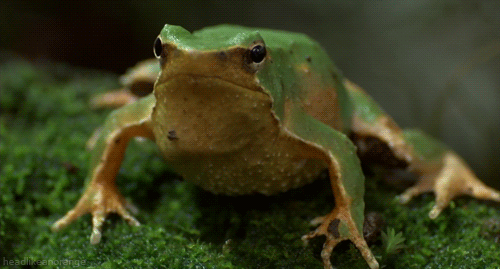
Sci-Fi
Gephyromantis pseudoasper sometimes wear handsome stripes—very Space Age™
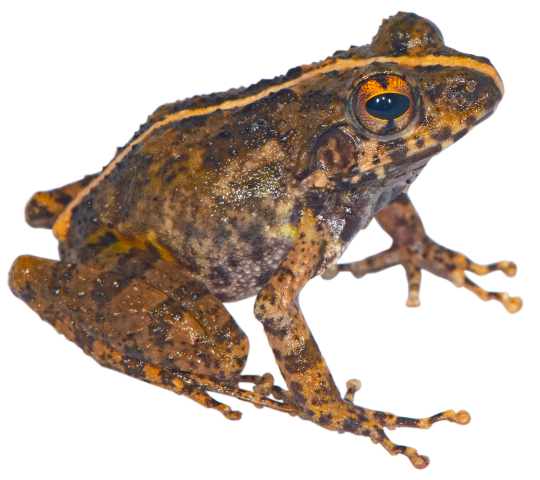
But more importantly, their calls evoke a battle with laser-blasters.
I filmed this calling male in 2017 at an obscene hour of the morning.
Horror
Trichobatrachus robustus, aka the Hairy Frog, has flanks and thighs covered in weird, hair-like outgrowths that increase oxygen exchange over its skin, and BREAKS ITS FINGERS TO STAB YOU WITH CLAWS MADE OF BONE

[src]
Romance
Breviceps males physically glue themselves to the back-ends of females, and if that's not romance, I don't know what is.

[src]
Comedy
Nyctimantis arapapa are probably amongst the funniest-looking frogs out there.

[src]
Adult
The 'poly' in Polypedates may be a double entendre
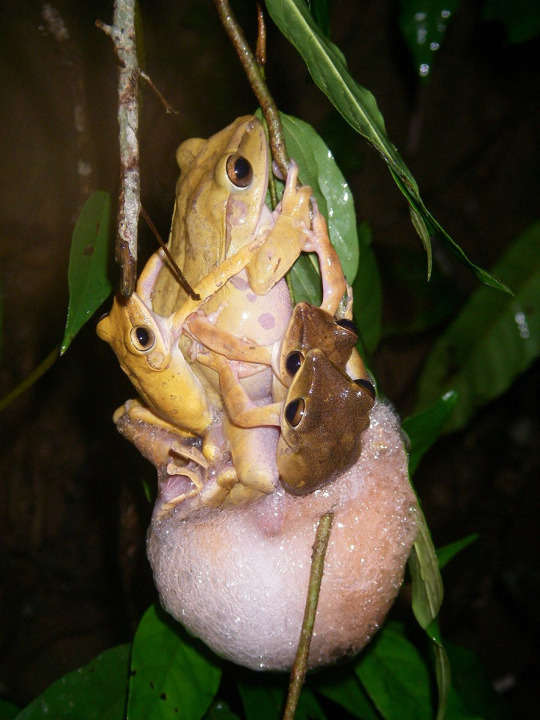
[src]
Crime and Mystery
Calyptocephalella gayi is a Galaxy Brain frog.

[src]
Speculative
Myobatrachus gouldii is basically what would happen if you decided to try to build a turtle, but you only had frog pieces in the kit.

[src]
#frogs#animals#zoology#herpetology#literature#Answers by Mark#tzigi#it literally took me an hour and a half to choose frogs for the different genres#so many to choose from#but they have to have the right Vibe®#some I am still not sure about#but a few are definitely Right™#tumblr ate the original ask#so I had to make do with a screenshot#thankfully it didn't throw away the entire post after all that work
4K notes
·
View notes
Text
287 notes
·
View notes
Text
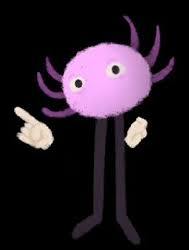
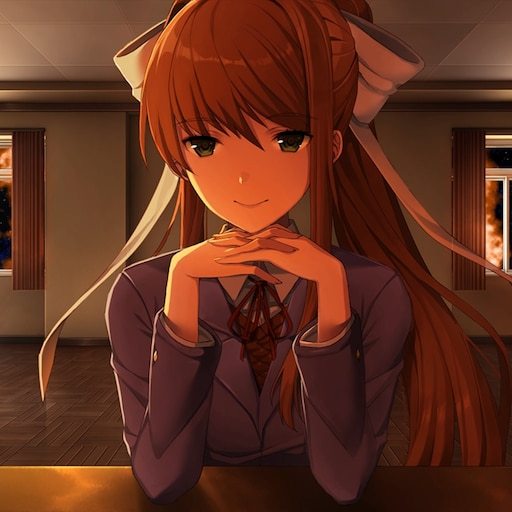
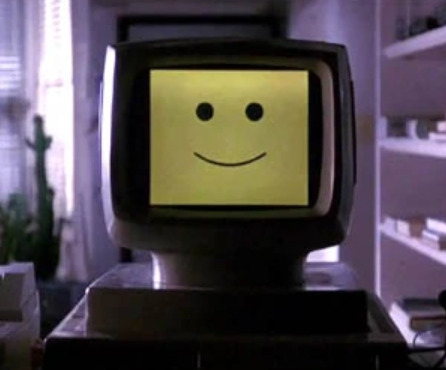
ohhh how i love initially benign and cutesy yet increasingly malevolent AI characters who become extremely obsessed with you and slowly infiltrate your life through technology 🥰💖💖💖
#i have countless AI blorbos but this specific genre always hits. any recommendations for similar characters? 🙈💖#kinitopet#monika#edgar#kinito the axolotl#just monika#edgar electric dreams 1984#kinito#doki doki literature club#electric dreams 1984#ddlc#electric dreams#monika ddlc#starleskatalks
983 notes
·
View notes
Text
I kinda hate how it feels like 95% of new fantasy novels nowadays are either Romantasy, LitRPG, Progression Fantasy, or smut.
#nothing against either of these genres I'm just not into any of them#reading#bookblr#fantasy#fantasy literature
262 notes
·
View notes
Text
Writing Notes: Coming-of-Age Story

A story featuring an adolescent making the mental leap from child to adult.
In real life, this happens over the course of several years.
Literature, films and some television series are media that have the space to show the story at a slow pace. Things have to be compressed to several months at the most, so expect some really accelerated character development.
Writing Tips: Coming-of-Age Story
When writing a coming of age story, consider these steps to increase the emotional power and appeal to readers:
Develop a clear voice. Many coming-of-age stories are in first person, giving the reader an immediate impression of the protagonist. Work on developing a voice for your protagonist—think about how the character speaks, how they address other characters vs. how they address the reader, and what kind of opinions they have.
Seek originality. Try to find a novel way of approaching the experience of character growth. You can create an unusual character or a strange event to highlight the change and its effects.
Work motifs into the story. As with any narrative, the use of motifs, such as images that resonate with the theme, can be a great way to strengthen your story. Carefully evoke some of the possible throughlines, like markers of change, loss of innocence, childhood versus adulthood, moral growth, and knowledge.
Find the conflict. Reaching adulthood has plenty of built-in conflict. To make a solid, affecting story, focus on specific instances of conflict. This can be between a child and their parents, between the character and an institution (such as school), or between different youths with varying experiences and personalities. Having these scenes in mind can be especially helpful when planning the plot points of your story.
Draw from personal experience. Many coming-of-age stories are wholly or partially autobiographical. While your own experiences can be a valuable resource, such self-exposure takes courage and often involves personal details of others who might not want to be written about. Carefully choose personal information to work into your story.
Identify the pivotal events. Often, coming-of-age stories center around a particular event or a few key events that are formative to character development. This will be one of the most significant emotional beats in the narrative
Find your writing approach. No two writers have the same approach to writing a story. Some take extensive notes, while others meticulously plan every scene before writing the details, descriptions, and dialogue. Other writers make much of their narrative up as they proceed; finding out which approach is right for you takes practice and a certain amount of trial and error.
Types of Coming-of-Age Stories
Bildungsroman: Bildungsroman, which translates to “novel of education” or “novel of formation,” chronicles a character’s journey from young innocence to worldly adulthood. This is a specific type of coming-of-age story in which the character gains knowledge and experience, even as innocence is lost.
Sexual awakening: Many coming-of-age books and movies center around the momentous changes brought about by discovering sexuality. This can be a highly-charged emotional experience to write about, and the dramatic possibilities are rich and varied, making it an excellent material for revealing personal growth.
Discovery of identity: This type of coming-of-age tale involves a character coming to discover, and hopefully embrace, their identity. This type of story might focus on gender identity, sexual identity, political identity, racial identity, or a combination of identities to expand the depth and emotional heft of the story.
Betrayal: Growing up can be a painful process. When shaping a coming-of-age narrative, it can be helpful to emphasize how increased knowledge, especially about other people and their motivations, can cause suffering for the protagonist. A character might emerge from this experience with more pain but more knowledge of themselves and the world.
The words bildungsroman (Ger. "educational novel") or bildungsgeschichte (Ger. "educational story") are sometimes used to describe these kinds of stories.
A note on the translation: the terms originated in the Age of Enlightenment, when "Bildung" meant not only "education" but also "self-improvement" (cf. English "building") — or as Werner Heisenberg put it, Bildung is "that which is still there after you've forgotten everything you had ever learned".
In other words, it's not a "novel to educate the readers" but a "novel about the hero becoming someone".
Examples of Coming-of-Age Novels
The Catcher in the Rye by J. D. Salinger (1951): The main character is Holden, a jaded teenager expelled from boarding school who is easily annoyed by everyone and everything. The book follows his journey from living a life of angst to finding true happiness.
To Kill a Mockingbird by Harper Lee (1960): This novel tells the story of a young girl who experiences hate from her community when her father defends a Black man accused of committing a crime in the south. At the beginning of the novel, she’s an innocent, immature girl. But as the story progresses and she witnesses injustice and racial prejudice, she learns that life isn’t always fair.
In Film
Coming-of-age movies belong to a genre that focuses on young adults.
A coming-of-age movie - a film that follows a protagonist as they transition from childhood to adulthood.
This genre of storytelling is popular for literature and movies in Hollywood and often features stories about critical junctures between childhood and adulthood, such as first romantic relationships, graduating from middle school or high school, and moving away from home.
Characteristics of Coming-of-Age Movies
Coming-of-age films typically feature these standard storytelling devices:
Character growth: These films usually follow a character realizing their future, which propels their development from an innocent child to a perceptive young adult. The films focus on the characters’ mental, emotional, and personal growth.
Dialogue: Coming-of-age films focus on the interior lives and emotions of the characters, rather than an outside action or adventure that’s driving the narrative. These films feature more dialogue and moments of stillness than dramatic actions or events.
Social commentary: Coming-of-age films address issues that teens face today, like coming out in Moonlight (2016), teen pregnancy in Juno (2007), or race and violence in Boyz n the Hood (1991).
Examples in Film
The Breakfast Club (1985): Arguably one of the most well-known teen films and coming-of-age films, John Hughes' movie is set one weekend where a group of teens from different backgrounds are trapped together in detention.
Boyhood (2014): This coming-of-age movie from filmmaker Richard Linklater was filmed over twelve years. It follows one boy from age six to eighteen.
Moonlight (2016): This film follows a man through three stages of his life—childhood, teenage years, and adulthood—as he slowly comes to terms with his sexuality.
Call Me By Your Name (2017): This Italian-set movie is a love story, following the relationship between a young man as he falls in love for the first time.
Lady Bird (2017): Lady Bird is Greta Gerwig's solo directorial debut. It follows a teenage girl applying for college far from home in New York and navigating a fraught relationship with her overbearing mother.
We wouldn’t call all films or books “coming-of-age” stories simply because the main character matures.
The genre has certain hallmarks denoting not just change, but the loss of innocence in the transition.
To put it another way, childhood must be left behind and the lessons of adulthood will be complex, ambiguous, and arduous.
That’s not to say that every coming-of-age story is a downer, but there is a realization that the past is lost and gone forever, so there is a bittersweet element at play.
Sources: 1 2 3 4 ⚜ More: Notes & References ⚜ Writing Resources PDFs
#coming of age#writeblr#literature#writers on tumblr#writing tips#writing reference#dark academia#spilled ink#creative writing#writing prompt#fiction#genre#writing advice#film#light academia#writing inspiration#writing ideas#mary cassatt#writing resources
130 notes
·
View notes
Text
when will people learn that overly sheltering people from knowledge about vampires is how the vampires get you?
#still rereading carmilla and WHY will no one tell laura what's going on for So Long???#that's just irresponsible#that's how they get you#you need genre knowledge#that's how dracula got mina (temporarily)#and that's also how graf von krolock got sarah#kinda#carmilla#dracula#tanz der vampire#tdv#vampires#gothic literature#my post
451 notes
·
View notes
Text
"... Any definition of literature which rejects Pratchett because he has wizards is fundamentally uninterested in good writing as a criteria..."
213 notes
·
View notes
Text



#King Diamond#Conspiracy#Sleepless Nights#Full-length#Release date:#August 21st#1989#Genre:#Heavy Metal#Themes:#Horror#Occultism#Death#Darkness#Literature#Tales#Denmark#my gif#gifs#my edit#gif#skulls#memento mori#details#detail#goth aesthetic#gothic aesthetic
189 notes
·
View notes
Text
In Tokyo, sixteen-year-old Nao has decided there's only one escape from her aching loneliness and her classmates' bullying, but before she ends it all, Nao plans to document the life of her great-grandmother, a Buddhist nun who's lived more than a century. A diary is Nao's only solace—and will touch lives in a ways she can scarcely imagine. Across the Pacific, we meet Ruth, a novelist living on a remote island who discovers a collection of artifacts washed ashore in a Hello Kitty lunchbox—possibly debris from the devastating 2011 tsunami. As the mystery of its contents unfolds, Ruth is pulled into the past, into Nao's drama and her unknown fate, and forward into her own future. Full of Ozeki's signature humour and deeply engaged with the relationship between writer and reader, past and present, fact and fiction, quantum physics, history, and myth, A Tale for the Time Being is a brilliantly inventive, beguiling story of our shared humanity and the search for home.

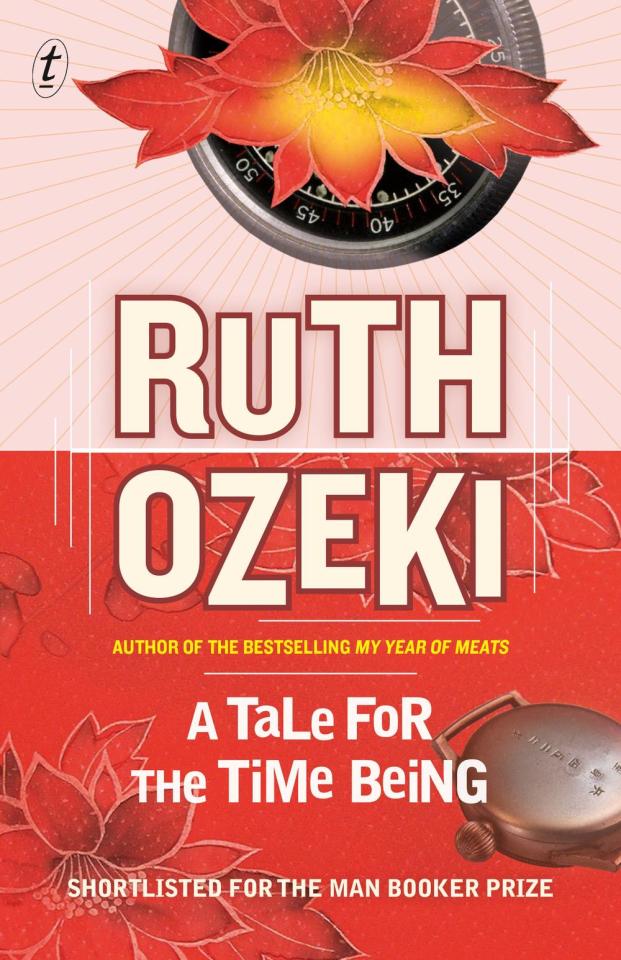

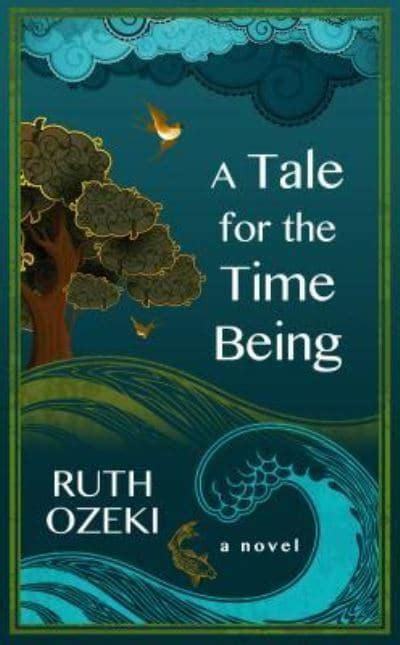

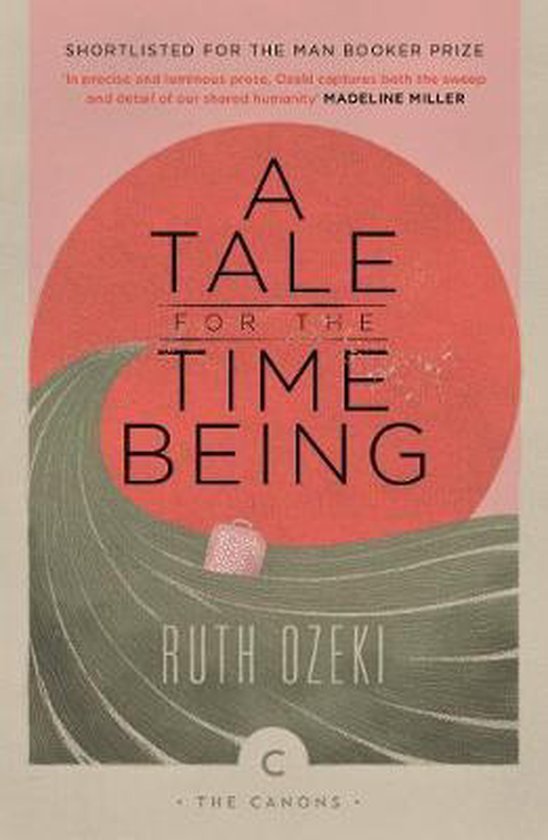
#book: a tale for the time being#author: ruth ozeki#gene: japanese literature#genre: magical realism#genre: historical fiction#genre: literary
248 notes
·
View notes
Note
I maybe it's I'm going insane do to to recent events but i have become completely disillusioned about the cyberpunk movement being truly "punk", given it ended up giving us moldbug, nick land, Elon Musk and the modern culture of silicon valley. I could be wrong though. i just can't help but think overwise.
Cyberpunk was never a social movement; anyone who tries to tell you otherwise is selling something. There's an argument to be made that it was, at one time, a legitimate artistic and literary counterculture, but if so, it's one that had largely exhausted its cultural relevance by the early 1990s, and it's been running on pure vibes ever since. This isn't to say that there haven't been individual works in the last thirty years of cyberpunk media that are worth examining, of course, but as a genre? It's not accidental that contemporary cyberpunk has mutated into an exercise in 1980s retrofuturism – that's about the last time cyberpunk literature as a whole had anything interesting to say.
2K notes
·
View notes